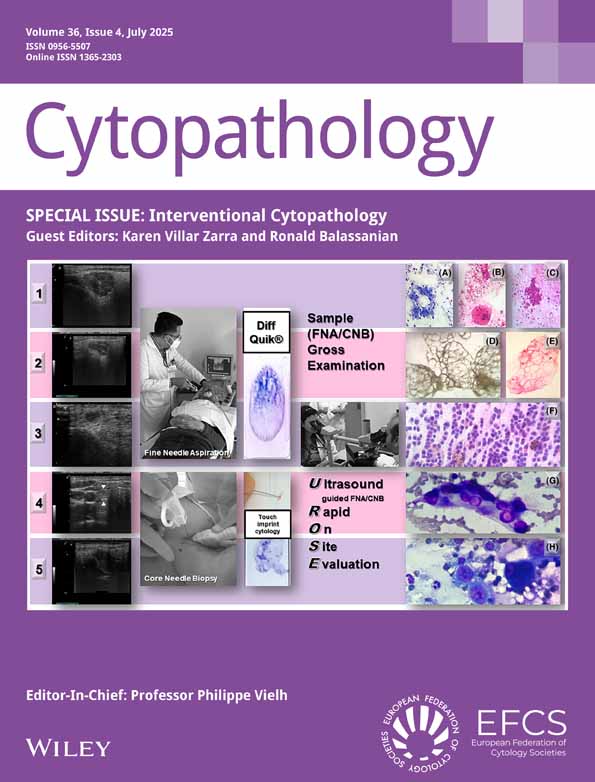Primary Hepatoid Adenocarcinoma of the Lung: Clues for Cytological Diagnosis
Funding: The authors received no specific funding for this work.
ABSTRACT
Introduction
Hepatoid adenocarcinoma was described in the 1980s, but clear-cut criteria for diagnosis were not settled until the 1990s. Diagnosis was initially based on the increase of serum alpha-fetoprotein associated with the tumour, but with time, it was shown that some lesions with morphological and immunohistochemical features of hepatoid adenocarcinoma were not associated with alpha-fetoprotein elevation and this is no longer required for diagnosis. Recent systematic reviews have described less than 70 cases of primary hepatoid adenocarcinoma of the lung, and most of these cases were diagnosed by biopsy.
Case Presentation
We herein report the case of a 67-year-old man diagnosed with primary lung hepatoid adenocarcinoma by cytology, emphasising the cytological features that should lead to suspecting this diagnosis.
Conclusion
Very few reports have described the cytological features of this neoplasm, but it is important to define and recognise them as cytology is in many cases the only available sample to diagnose and manage patients with lung neoplasms. Besides, hepatoid adenocarcinoma seems to be resistant to conventional therapy and it is essential to recognise it and avoid confusion with other tumour types.
Abstract
Hepatoid carcinoma is an aggressive and infrequent type of tumour. Lung is a very infrequent location of this tumour. Hepatoid carcinoma can be suspected from cytological features. Immunocytochemistry can confirm suspicion in cytological samples.
Conflicts of Interest
The authors declare no conflicts of interest.
Open Research
Data Availability Statement
All data analysed during this study are included in this article. Further enquiries can be directed to the corresponding author.




